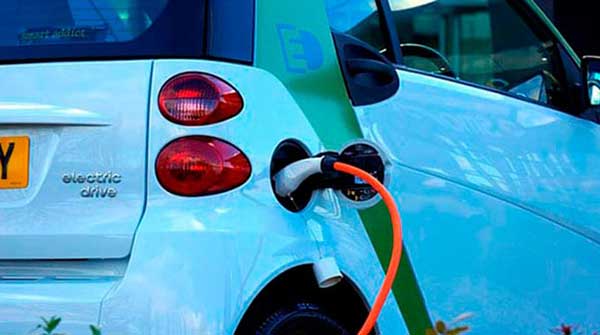The era of electric vehicles has dawned. The transition has begun, and global energy dynamics are in flux

Oil use in the transportation sector is reaching its peak.
By 2027, electric vehicles will force a reversal to the era of rising demand for oil used in transportation, says a BloombergNEF projection.
And this carries significant implications for the global crude markets. The transportation sector uses nearly 60 percent of global oil demand, with passenger vehicles and trucks guzzling the lion’s share.
The report emphasizes that the consumption of fossil fuels in the transportation sector is now under a cloud. Bloomberg analyst David Doherty is reported as saying that a combination of EVs, fuel efficiency and shared mobility is affecting demand for road fuels. The demand decline, which starts with peak demand just four years away, is set to be further exacerbated after 2030, the report underlined.
The Bloomberg report says that EVs are expected to displace a staggering 20 million barrels per day (bpd) in oil demand by 2040, up from two million barrels per day currently.
As per the projection, the demand for road fuels will peak at 49 million bpd in 2027. Then demand (for road fuel) will begin to decline structurally. Bloomberg analyst Vandana Gombar stresses that the demand for gasoline and diesel for road transport has likely already risen as far as it’s going to go in the U.S. and Europe, while demand in China is set to peak in 2024. Demand in other major consuming countries starts to decline later – in the 2030s.
Furthering the argument is the fact that last year, the electric vehicle sector crossed a global milestone, with one out of 10 vehicles sold being electric, wrote Alex Kimani in his piece for Oilprice.com. And with the EV market strengthening, competition in the electric vehicle sector is also heating up. Major traditional ICE car manufacturers, including General Motors and Ford, are seen entering the sector in a big way.
Kimani writes that Mary Barra, the CEO of General Motors, is now asserting that her company plans to produce over 400,000 electric vehicles from 2022 through the first half of 2024 and that the company will be capable of annual EV production of more than one million in North America in 2025, overtaking Tesla in just two to three years.
A combination of factors, including new compelling models from automakers, improvements in battery technology, policy support and more charging infrastructure, are contributing to the surge in sales of EVs. And in the meantime, electrification is also beginning to spread to new segments of road transport.
The rapid adoption of EVs is bad news for global oil demand. BloombergNEF estimates EVs are currently displacing 1.5 million barrels of oil demand per day, good for three percent of total road fuel demand. But with projections of the EV growth trajectory all over the place, it becomes difficult to accurately estimate how much impact the sector will ultimately have on future oil demand.
Thus, the forecasts vary.
Projections for the penetration of EVs to total passenger car sales by 2030 range from 11 percent at the low end to 63 percent at the high end, while projections for 2050 range from 31 percent to nearly 100 percent.
In carbon-constrained forecasts, passenger vehicle oil demand is expected to fall from about 25 million bpd today to three to six million bpd by 2050. However, some other forecasts see passenger vehicle oil demand falling from 10 to 20 million barrels per day by 2050, says Kimani. As per BloombergNEF, by 2030 over half of passenger cars sold in the U.S. will be electric vehicles.
Not everyone, however, agrees. An op-ed in CNBC on August 30 said that the 2022 World Energy Report, published by the UK-based Energy Institute and consulting firms KPMG and Kearney, noted that fossil fuels constituted 82 percent of global energy in 2022. This is comparable to OPEC’s latest world oil outlook and represents a similar level to 30 years ago. Hence, according to CNBC, the argument that EVs are replacing ICE doesn’t appear very strong.
A recent analysis from the U.S. National Automobile Dealers Association quoted by CNBC also said almost the same. “Sales of hybrids, plug-in hybrids and battery electric vehicles (BEV) accounted for only 12.3 percent of all new vehicles sold in the U.S. in 2022, while the total sales of BEVS also made up only 19 percent of new car sales in China last year. Similarly, in the EU, vehicles using petrol or diesel still accounted for around half of all car sales in 2022.”
And with the world adding another 1.6 billion people to its total population by 2045, more than 700 million people still lacking access to electricity and almost one-third of the global population using inefficient, polluting cooking systems, the world needs more oil, not less, some assert.
OPEC also believes that the global energy demand will increase, and not diminish, by 23 percent by 2045. The demand is projected to increase to around 110 million bpd from the current 102 million bpd.
The debate is on. Yet, to be fair, the electric vehicle era has dawned. The transition has begun, and global energy dynamics are in flux.
Toronto-based Rashid Husain Syed is a highly-regarded analyst specializing in energy and politics, with a particular emphasis on the Middle East. Besides his contributions to both local and international newspapers, Rashid frequently lends his expertise as a speaker at global conferences. His insights on global energy matters have been sought after by organizations such as the Department of Energy in Washington and the International Energy Agency in Paris.
For interview requests, click here.
The opinions expressed by our columnists and contributors are theirs alone and do not inherently or expressly reflect the views of our publication.
© Troy Media
Troy Media is an editorial content provider to media outlets and its own hosted community news outlets across Canada.


